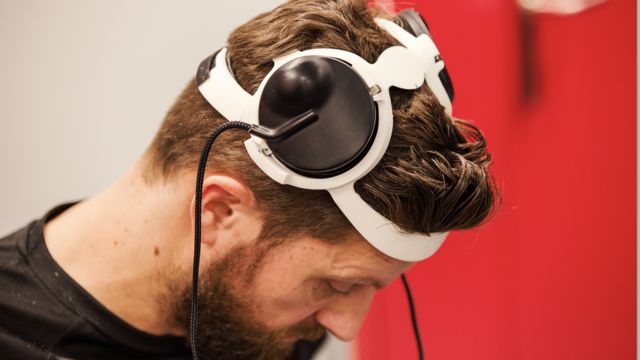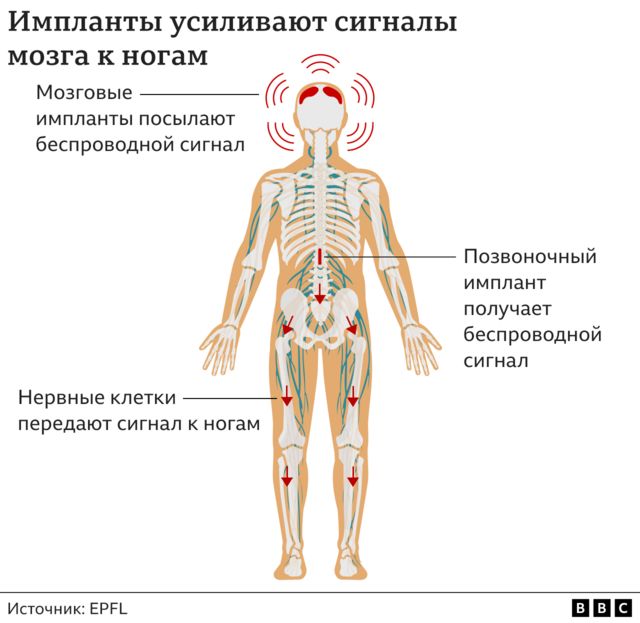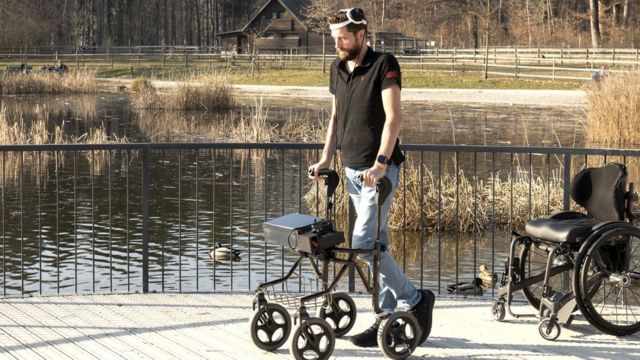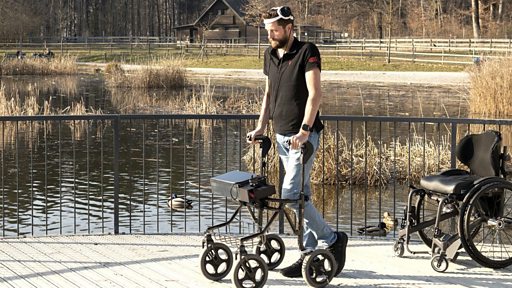The life of Dutchman Gert-Jan Oskam, who was paralyzed in a cycling accident 12 years ago, has been transformed thanks to new brain implant technology. Electronic implants wirelessly transmit his thoughts to his legs via a secondary implant in his spine, literally making them move. The whole system is in the experimental stage, but according to experts it is a very promising experiment. The man can now not only walk, but stand upright and climb stairs. “I feel like a little kid just learning to walk,” Oskam admitted in an interview with the BBC. “It’s been a long journey, but now I can stand on my own two feet and even enjoy a beer with friends. And yet it is such a joy that many people don’t even think about it. 
The sensors on Gerta-Yana’s helmet transmit signals from the brain to the spinal implant. The authors of the new development, reported in the journal Nature, are Swiss researchers. And a delicate surgical operation to transplant the implants was performed by neurosurgeon Professor Joselyn Bloch of the University of Lausanne. According to her, the entire system is still in the early stages of development, and it will take many years before it can be widely used by paralyzed people. However, scientists are making every effort to speed up the process. “For us, it is important not just to conduct a scientific experiment, but ultimately to provide access to this technology for people with spinal cord injuries who are already used to hearing from doctors that they need to get used to the fact that they will never walk again,” said Professor Blokh in an interview with the BBC. 
Essentially, a paralyzed person thinks about what he wants to do while the computer translates his wishes into actions. The operation to restore Gert-Jan Oskaam’s ability to move independently was performed in July 2021. Professor Blokh made two round holes, five centimeters in diameter, on either side of his skull, in the area of the brain responsible for motor control. Two disk-shaped implants were placed in these holes, which transmit brain signals, essentially Gert-Jan’s wishes, to two sensors attached to a special helmet he wears on his head. Swiss scientists have developed an algorithm that, through a second implant in the spinal cord, converts these signals into instructions for the leg muscles. Professor Bloch ingeniously connected this second implant to the nerve endings involved in walking. 
After several weeks of training, researchers found that a paralyzed man could not only stand on his feet, but also move, albeit with the help of a walker. According to the head of this scientific project, Professor Gregoire Curtin of the Ecole Polytechnique Fédérale de Lausanne, the paralyzed person’s movements are slowed but smooth. “It’s very touching to see how naturally he moves,” says the scientist, “compared to what was available before, it’s a huge change.”
Experts say the new technology provides smooth and natural movements. We explain quickly, simply, and clearly what happened, why it matters, and what happens next. The number of episodes should stay the same: episodes The end of history: Podcast Advertising New brain implants were created based on earlier developments by Professor Kurtin, in which only a spinal cord implant was used to restore movement. It amplified the weak signal from the brain to the damaged part of the spine and was accompanied by additional programmed signals from a computer. Oskam is not the first patient to receive a spinal implant. In 2018, David Mzee received one, and it was so successful that he and his wife were able to conceive a child. Later, a similar operation was performed on Michelle Rocatti, who had lost all sensation in both legs after a motorcycle accident. He also started walking thanks to Swiss technology. The new technology has been incredibly helpful to both men, but in their case, the movements are entirely programmed by a computer and resemble robotic movements. They have to adapt to that program, and if there is a desynchronization, they have to stop and reprogram everything from scratch. Until he received a brain implant, Gert-Jan had only one spine. Now, he says, he can control his movements much better. “I used to feel that the system was managing me, and now I control it myself,” he says. However, neither the old nor the new system can be used permanently. They are too cumbersome and are still under development. But patients can use them for an hour or so several times a week during the rehabilitation process. The process of walking itself trains their muscles, and even when the system is turned off, some ability to move remains, so there is reason to believe that damaged nerve fibers are being restored. The ultimate goal of the scientists remains the miniaturization of their devices. Currently, Onward Medical, a company founded by Professor Kurtin, is working to improve the technologies for commercial application so that people can use these devices in their daily lives. “Everything is still ahead of us,” says Professor Curtin. “Gert-Jan received implants 10 years after the accident, but imagine what it would have been like if we had applied our system just a few weeks after the injury. The potential for recovery would have been enormous.


